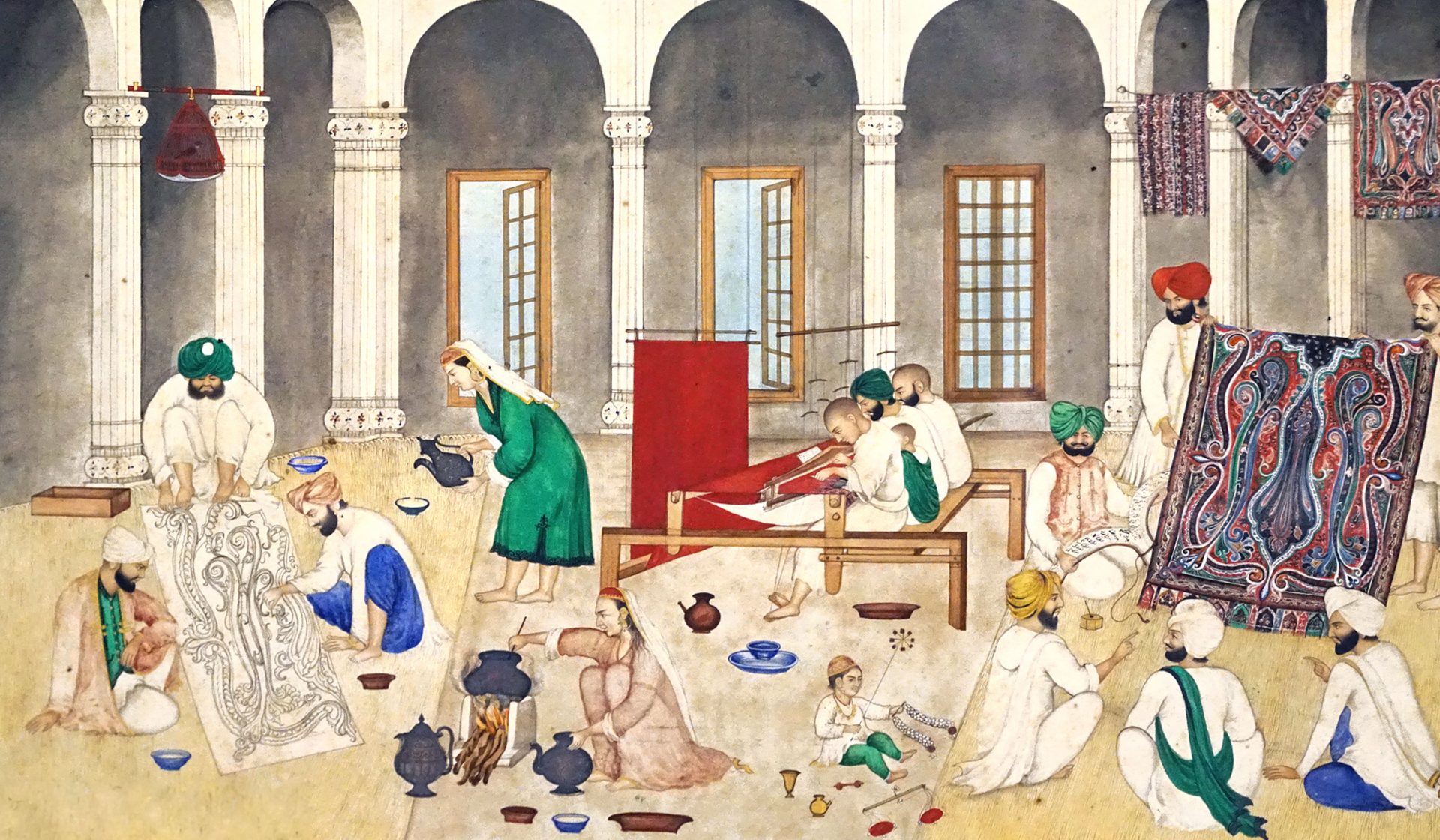Pashmina, a symbol of Kashmir’s cultural heritage, has long been revered for its unmatched craftsmanship. But today, its legacy is under threat as fake pashminas flood the market, casually worn as head scarves or rave accessories.
How did a centuries-old tradition become a victim of commodification – and what can we do to honor its true roots?
I’m sure you’ve heard of pashmina. How could anyone not?
After all, fashion influencers have been endlessly singing praises about it on TikTok, and ravers have even made it an essential accessory for the dance floor.
But, within the Kashmiri community – the true home of the pashmina – a different conversation is unfolding.
Many feel that the rise of imitations are a troubling sign of cultural appropriation, which disregards the rich heritage of their genuine pashmina.
What is pashmina?
The name ‘pashmina’ is derived from the Persian word pashm, meaning wool. In Kashmir, this luxurious material comes from the fine undercoat of the changthangi goat, found in the heights of the Himalayas in India’s Ladakh.
The intricate art of pashmina shawl-making dates back centuries. In fact, it was during the reign of King Zain-ul-Abidin– who invited skilled artisans from outside the Kashmir valley, that this craft flourished. Since then, this exquisite tradition has been meticulously passed down through generations, preserving the artistry and cultural significance of shawl-making.
Crafted through a painstaking and entirely manual process, pashmina is made by spinning wool into fine threads and weaving it on traditional handlooms.
And even though pashmina shawls are also produced in Pakistan, Nepal, and China, they hold a unique tradition and nativeness in Indian-administered Kashmir.
How pashmina became a global commodity
Fake pashminas as rave scarves have gained popularity lately due to their vibrant colors and affordability. But let’s face it: hand-crafted pashmina, held in such prestige, wouldn’t exactly RSVP to a rave under strobe lights and glow sticks, would it?
Yet, the appropriation of pashminas is not a recent phenomenon, and dates back to the 18th century, when this luxurious fabric was first introduced to Europe as an ‘exotic commodity’.
Valued for its uniqueness and mystique among the privileged classes, it quickly became a status symbol. Notably, its appeal was rooted more in its perceived exoticism than an appreciation for the intricate craftsmanship behind it.
Not long after, British and French manufacturers capitalised on its popularity by producing replicas using Jacquard machines, making them available at a fraction of the cost of authentic Kashmiri shawls.
Because the British held a monopoly over the trade routes for Kashmiri shawls, they were also able to undermine the control that Kashmiri artisans had over their craft. Combined with the rise of cheap replicas, this created significant economic challenges for artisans, many of whom relied on their craft for survival.
Present-day cultural appropriation of pashmina
Today, much of what fashion influencers or ravers wear features what’s known as a paisley design (a teardrop motif called buta in its original form). Even though paisley is a genuine design, it is not used for the traditional pashmina. Fun- fact: the name ‘paisley’ comes from the Scottish town where these imitations were mass-produced.
Less fun-fact: this trend eroded the cultural identity of authentic pashminas. Because over time, the term ‘pashmina’ began to be used indiscriminately as a marker of luxury, diluting its heritage and distancing it from its Kashmiri origins.
At the core of this discussion is the reality that pashmina symbolises much more to an ordinary kashmiri than a fashion accessory; it is used as a gift given during important ceremonies, a marker of status for many, and a symbol of identity.
View this post on Instagram
How to support authentic pashmina
Let’s be clear, this isn’t to say that people shouldn’t wear traditional clothing from other cultures. Clothing is for everyone, and cultural appreciation can be an effective means to foster connection and understanding.
Yet, what appears to be concerning is that a vital cultural element is being reduced to a commodified product, severed from its origins and the artisans who created it. And this comes at a time when Kashmir, a region plagued by conflict and instability, sees its artisans clinging to their craft as one of the last remaining expressions of their cultural identity.
For this reason, fake pashminas sold by industrial giants not only insult their artistry but also perpetuate the economic struggles these artisans face, threatening the survival of this rare and beautiful tradition.
But here’s the good news: at least now you know. And awareness is the first step toward making conscious, respectful choices.
By supporting authentic pashminas and educating yourself about it, you’re preserving a piece of history, honoring generations of craftsmanship, and standing in solidarity with the artisans who keep this art alive.
If you want to make a difference, you can explore platforms like Kashmir Box for GI-certified pashminas, or if you’re in India, Kashmers sells genuine pashminas.
Better yet, consider visiting the Kashmir Valley, meeting local artisans, and seeing their incredible work firsthand.
And if someone’s offering you a ‘pashmina’ for ₹800 (£8), as tempting as it sounds, clutch your wallet, channel your inner Olympic sprinter, and run away as fast as you can!















